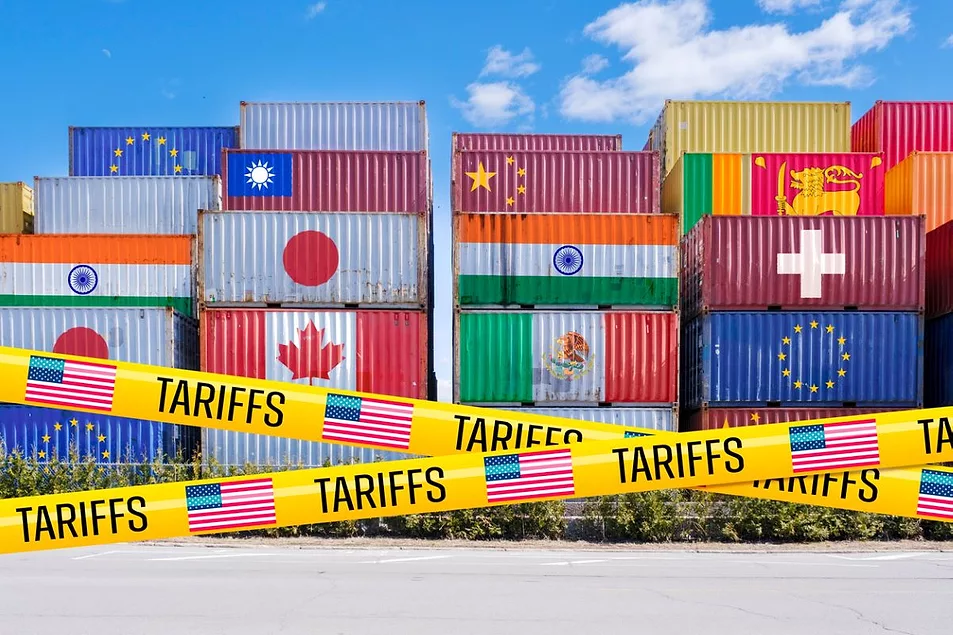[ad_1]
On July 31, the Trump Administration introduced sweeping new tariffs, continuing signs that it is determined to continue pushing a major shift in trade policy. The retail sector now faces mounting cost pressures and volatility, with ripple effects expected across the supply chain from manufacturers to store shelves.
In this challenging and uncertain environment, reactive measures to keep up will no longer suffice. Retailers must adopt proactive and data-driven approaches across all possible strategic and operational measures to reduce undesirable impacts and remain as competitive as possible. Supply chain visibility is critical for enabling more accurate demand forecasting and smarter sourcing strategic decisions. Those who invest in data infrastructure will be best equipped to mitigate risks, control costs and maintain customer trust.
The Challenges Ahead
The new tariffs will significantly reshape the retail landscape by driving up operational costs of imported materials and finished goods. While some may attempt to offset these costs through price adjustments, others may try to absorb them — at least for a time — to stay competitive and retain consumer trust, putting additional pressure on already slim margins. These increases will likely hit middle- and lower-income consumers the hardest, as they are more sensitive to price fluctuations and may begin to reduce spending, even on essential items.
An overall decline in demand could be imminent, especially for staple goods that are central to retail performance. Recent data from the U.S. Commerce Department indicates that consumer confidence is already tumbling. Shoppers are expected to exercise more conservative spending habits as a scarcity mindset prioritizes essential items and low-cost alternatives. These types of behavioral changes from customers disrupt traditional sales cycles and require increased agility to shift pricing strategies.
At the same time, tariffs increase the risk of supply chain disruption, as exemplified by the current trade war between the U.S. and China. The Administration’s tariffs on Chinese goods have increased prices on key retail categories, forcing companies to either adjust prices or absorb costs across the electronics, clothing and consumer product sectors. Similarly, the U.S.-EU “Banana Wars” (1993–2009) provide another cautionary tale: The EU’s tariffs on Latin American bananas triggered U.S. retaliation in the form of 100% tariffs on European luxury goods, which disrupted operations for high-end retailers and brands such as Louis Vuitton and Gucci. Prices spiked, consumer demand dropped, and sourcing strategies had to be rethought almost overnight.
Outside of higher prices causing consumers to modify spending habits, historical tariff data demonstrates the impact of tariffs on retail sourcing, as retailers are left scrambling to diversify suppliers and become vulnerable to product delay. As trade policies evolve and geopolitical tensions mount, businesses must prioritize flexibility and resilience in their supply chains or risk inventory shortfalls, shipping delays and further cost inflation.
Effective data management plays a critical role in helping retailers mitigate the impact of tariffs. Real-time data provides critical supply chain visibility, enabling retailers to optimize inventory, streamline logistics and enhance supplier collaboration. A centralized data-management platform ensures a single source of truth, allowing businesses to execute more precise pricing strategies and forecast demand more accurately.
This level of agility is essential for responding to price fluctuations, disruptions in sourcing, and evolving consumer demand. Retailers equipped with the right data infrastructure can prevent costly overstocks or stockouts, reduce waste, and maintain customer trust — all while navigating volatile global conditions.
A Tariff-Proof Roadmap
To remain competitive, or reduce damage, retailers should adopt a multi-pronged approach that balances cost savings, optimization and customer centricity. In the short term, the priority should be establishing an accurate and up-to-date baseline of current operations, enabling businesses to assess where proactive adjustments are most urgently needed. These measures include:
- Data-driven cost monitoring. Track components such as raw materials, freight and labor to assess real-time cost impacts.
- Assortment simplification. Emphasize core categories and reduce non-essential SKUs to lower inventory costs and minimize overstocks.
- Catering to price-sensitive customers. Focus on cost-efficient recommendations and offers tailored to budget-conscious shoppers.
- Optimizing supply chain efficiency. Minimize inefficiencies in logistics, renegotiate supplier contracts and consider alternative sourcing options.
- Reinforcing customer communication and empathy. Strengthen messaging that acknowledges financial concerns while providing solutions, such as value-driven promotions or budget-friendly product bundles.
Long-term efforts should focus on strengthening infrastructure, investing in supply chain resilience, and implementing systems that support sustainable growth such as:
- Tailored pricing strategies. Avoid broad price increases by using data to segment customers, and adjust pricing accordingly.
- Supplier diversification. Strengthen supplier relationships and explore alternative sourcing models to reduce reliance on high-tariff regions.
- Customer behavior insights. Understand key customer segments and how they define “value.”
- New store formats. Shift toward cost-efficient retail formats, such as smaller footprint stores or self-service models, to reduce overhead.
- Private-label strategies. Refine the mix of private and national brands, ensuring that retailers’ private-label offerings build awareness, advocacy and loyalty.
- Automation and AI: Adopt advanced analytics and predictive models to optimize inventory, forecast demand and streamline operations.
No definitive timeline or crystal ball can predict how tariffs will continue to impact the retail sector. What’s clear is that volatility will remain. In the face of existing headwinds, the best course of action is preparation. By investing in infrastructure that prioritizes centralized data management, retailers can ensure that their supply chains are well-informed to operate cohesively, efficiently and with agility. A connected, data-driven ecosystem not only supports better decision-making, but also protects profit margins, customer loyalty and long-term competitiveness. Retailers that act now will be best positioned to thrive in an increasingly volatile environment.
Miriam Molino Sánchez is head of industry practices with Stibo Systems.
[ad_2]
Source link



